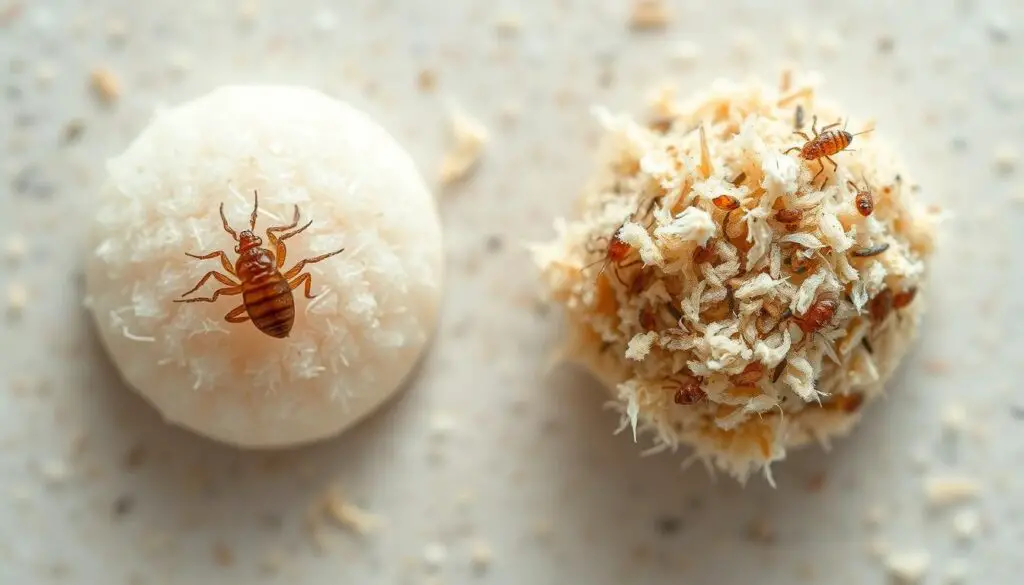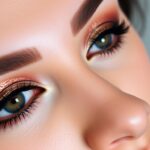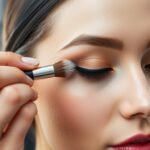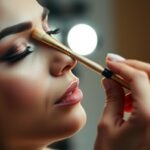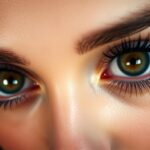Ever found yourself scratching your beard and wondering what’s causing those annoying white flakes? Beard dandruff can be a frustrating experience that impacts your confidence and skin health. Understanding the difference between these conditions is crucial for effective treatment.
Dandruff is a common skin condition known as seborrheic dermatitis, affecting up to 87.7% of men with facial hair. It’s characterized by white or yellow flakes that can make your beard look unclean and feel uncomfortable. Unlike scalp dandruff, beard dandruff presents unique challenges that require targeted care and attention.
This comprehensive guide will help you navigate the world of beard dandruff. We’ll explore the causes, symptoms, and most effective treatment strategies. You’ll learn how to regain a healthy, flake-free beard. From understanding the underlying skin conditions to discovering practical solutions, you’ll gain the knowledge needed to tackle beard dandruff head-on.
Get ready to transform your beard care routine and say goodbye to those pesky white flakes. Your confidence and skin health are about to take center stage.
Table of Contents
What Causes Beard Dandruff?
Beard dandruff is a common problem for many men. It can cause discomfort and make you feel embarrassed. Knowing what causes it can help you manage and prevent it.
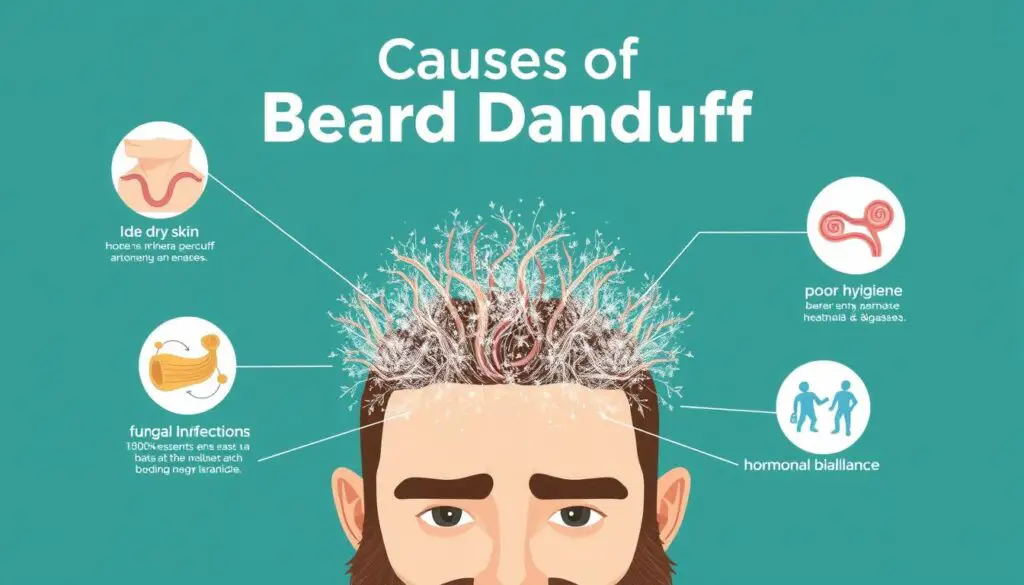
Fungal Overgrowth: The Microscopic Culprit
A tiny fungus called Malassezia globosa is the main cause of beard dandruff. This fungus is always on your skin and helps break down oils. When it gets too active, it can cause your skin to flake and itch.
Underlying Skin Conditions
Some skin conditions can make beard itch and dandruff worse. Seborrheic dermatitis is a big one, affecting 3% to 5% of adults. It leads to:
- Scaly, red patches
- Persistent skin inflammation
- Increased skin cell production
Environmental Factors
Things outside of you can also cause beard dandruff. Dry air, cold weather, and stress can make it worse. Here are some environmental triggers:
- Low humidity levels
- Extreme temperature changes
- High-stress situations
“Understanding your skin’s unique characteristics is the first step in managing beard dandruff effectively.”
| Dandruff Risk Factors | Percentage of Population Affected |
|---|---|
| General Dandruff Prevalence | 50% |
| Seborrheic Dermatitis in Adults | 3-5% |
| Stress-Induced Flare-ups | Approximately 40% |
Recognizing Beard Dandruff Symptoms
Spotting beard dandruff early is key to managing it well. Beard flakes are more than a cosmetic problem; they signal your beard needs care. Knowing the symptoms helps you groom your beard and keep your skin healthy.
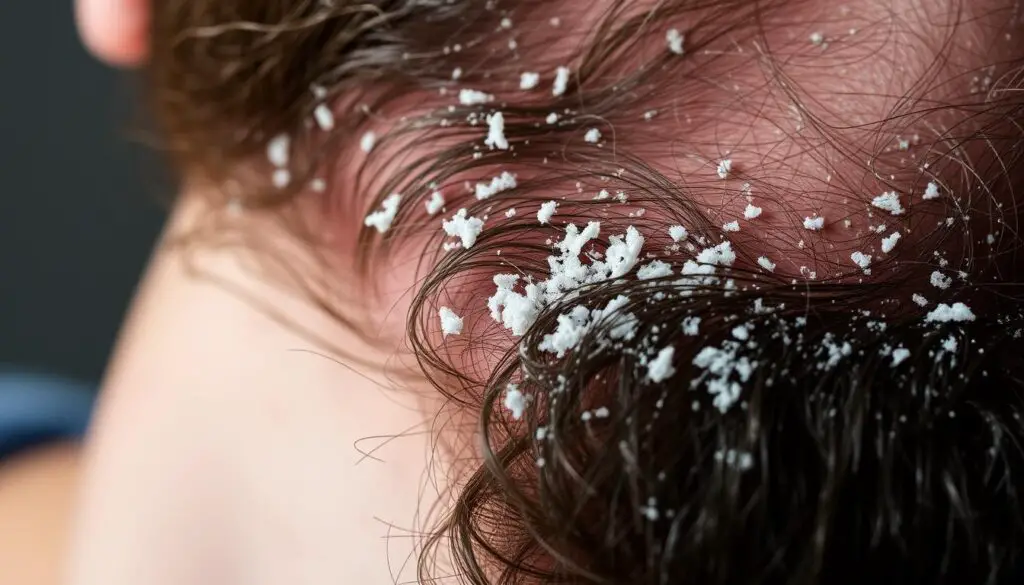
Visible Flakes: The First Warning Sign
Beard flakes are white or yellowish and vary in size. Unlike dry skin, these flakes stick around and are easy to spot. They often:
- Fall onto your shirt or jacket
- Stick to your beard hair
- Become more visible against dark clothing
Itching and Irritation: More Than Just Discomfort
Itching under your beard is a clear sign of dandruff. About 50% of people with beard dandruff itch. This itch can be mild or severe, showing there’s a skin problem.
“Your beard should feel comfortable, not like a scratching post!” – Beard Care Expert
Redness and Inflammation: When to Pay Attention
Good beard care means watching your skin. Redness and inflammation mean your skin might be reacting to:
- Fungal overgrowth
- Harsh product interactions
- Underlying skin conditions
Stress and tiredness can make these symptoms worse. Up to 40% of people say their skin gets more irritated when stressed.
The Impact of Beard Dandruff on Your Life
Beard dandruff is more than just a minor skin issue. It can really affect your daily life, how confident you feel, and how you look. Knowing how it impacts you can help you take better care of your beard to avoid it.

Social Confidence Challenges
Seeing white flakes on your beard can make social situations awkward. About 50% of adults deal with dandruff, but it’s still embarrassing. Visible flakes can make you feel shy in meetings, at parties, or even when you’re close to someone.
Skin Health Considerations
Not treating beard dandruff can lead to bigger skin problems. The fungus that causes dandruff grows on skin oils. Without the right products, you might face:
- Persistent skin irritation
- Potential secondary infections
- Increased skin sensitivity
Overall Beard Appearance
Your beard shows how healthy your skin is. Dandruff can make your beard look messy and unhealthy. This is especially true for shorter beards, as flakes stand out more against darker hair.
“Your beard is more than facial hair; it’s a reflection of your personal grooming and health.”
| Dandruff Impact | Potential Consequences |
|---|---|
| Social Perception | Reduced confidence and perceived hygiene |
| Skin Health | Increased risk of irritation and infections |
| Beard Quality | Dull, flaky, and unmanaged appearance |
By sticking to a good beard care routine and using the right products, you can beat these challenges. This way, you can keep your beard healthy and your confidence high.
Differentiating Beard Dandruff from Other Conditions
It’s important to know the difference between beard dandruff and other skin issues. Not all flaking and irritation are the same. Knowing what you have helps you treat it right.
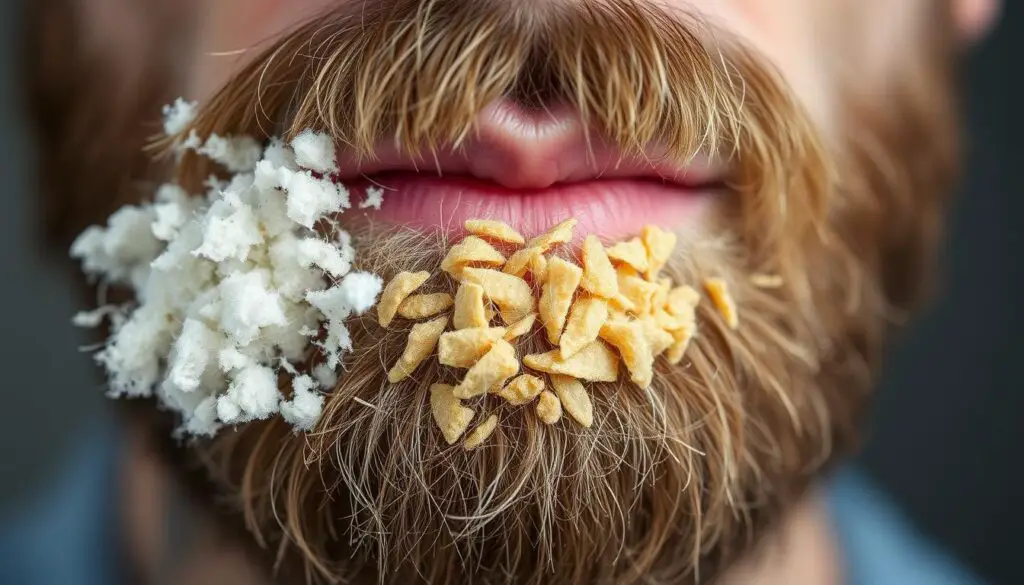
Dry Skin vs. Dandruff
Beard dry skin and dandruff look similar but are different. Dry skin has:
- Small, fine white flakes
- Tight, uncomfortable skin
- Less inflammation
Beard dandruff, often from seborrheic dermatitis, has more severe symptoms:
- Larger, oily yellow or white flakes
- Reddened, irritated skin
- More skin cell turnover
Beard Dandruff vs. Scalp Dandruff
Beard and scalp dandruff share some traits but face different challenges. The beard’s more sebaceous glands can make fungal growth and irritation worse.
| Characteristic | Beard Dandruff | Scalp Dandruff |
|---|---|---|
| Flake Size | Larger, more noticeable | Smaller, sometimes less visible |
| Skin Texture | Oily, inflamed | Variable, often dry |
| Fungal Involvement | High Malassezia presence | Moderate fungal activity |
When to Consult a Dermatologist
Most beard dandruff can be treated with over-the-counter products. However, see a doctor if you have:
- Persistent inflammation
- Severe itching or pain
- Signs of infection
- No improvement after a month of treatment
“Early detection and proper treatment can prevent long-term skin complications and maintain your beard’s health.” – Dermatology Experts
Over-the-Counter Treatments for Beard Dandruff
Dealing with beard dandruff can be frustrating. But, many over-the-counter treatments can help manage it. Knowing the right treatments can greatly improve your beard care.
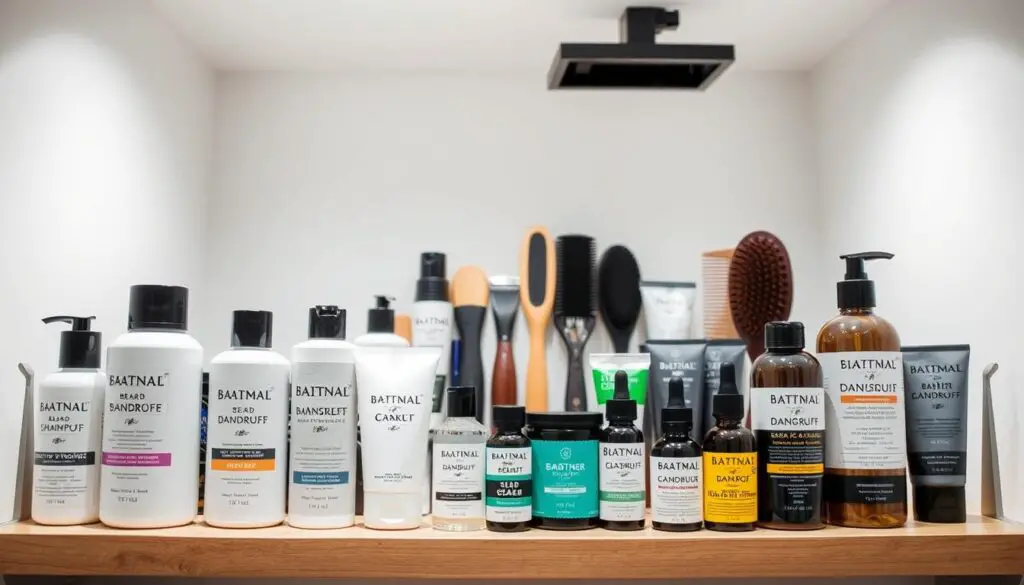
When looking for a good beard dandruff shampoo, you’ll find many options. These can help with flaking and itching:
Anti-Dandruff Shampoos
Beard dandruff shampoos have strong ingredients to fight skin flakes and itching. Look for products with:
- Zinc pyrithione
- Ketoconazole
- Selenium sulfide
- Salicylic acid
Medicated Beard Oils
Medicated beard oils offer targeted treatment for dandruff. They help balance skin moisture and fight fungal growth. Look for oils with:
- Tea tree oil
- Coconut oil
- Jojoba oil
Exfoliating Scrubs
Gentle exfoliation removes dead skin cells and stops dandruff buildup. Use scrubs 1-2 times a week for healthy beard skin.
“Preventing dandruff consists of moisturizing and conditioning the scalp” – Dr. Peterson Pierre
| Product | Price | Size | Key Ingredient |
|---|---|---|---|
| American Crew Anti-Dandruff Shampoo | $10 | 3.3 oz | Rosemary Oil, Zinc Pyrithione |
| Nizoral Anti-Dandruff Shampoo | $16 | 7 oz | 1% Ketoconazole |
| Head & Shoulders Royal Oils | $7 | 12.8 oz | Pyrithione Zinc |
While these treatments can manage beard dandruff, being consistent is crucial. Try different products to find what works best for your skin.
Natural Remedies for Beard Dandruff
Dealing with beard dandruff can be tough, but natural remedies can help. They use plant-based ingredients to fight off white flakes and improve your beard’s health.
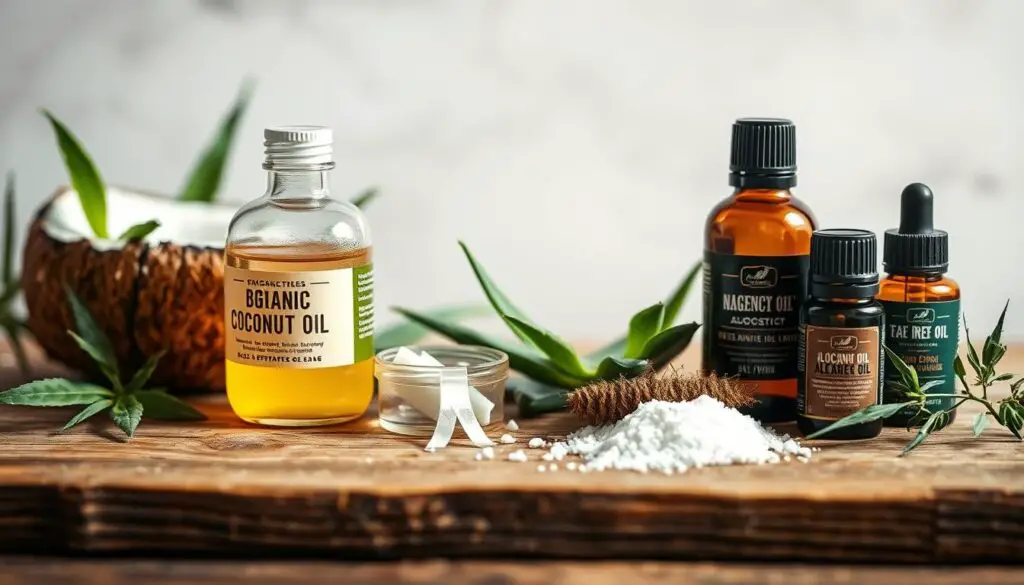
Many beard grooming tips miss out on natural treatments. Here are three effective remedies for beard dandruff:
Tea Tree Oil: Nature’s Antifungal Warrior
Tea tree oil is a strong fighter against beard dandruff. It has antifungal properties that target the Malassezia yeast causing dandruff. Studies show it can fight fungal growth in over 50% of cases.
- Dilute tea tree oil with a carrier oil (like coconut oil)
- Apply sparingly to beard and skin
- Use 2-3 times per week
Apple Cider Vinegar: pH Balancing Solution
Apple cider vinegar can change your beard care game. It balances skin pH, making it hard for fungi to grow.
| Benefit | Detail |
|---|---|
| pH Balancing | Optimal range: 4.5-5.0 |
| Application | Dilute 1 part vinegar with 3 parts water |
| Frequency | Once weekly rinse |
Aloe Vera: Soothing Skin Savior
Aloe vera is great for soothing irritated skin under your beard. Studies show it can reduce rash symptoms by up to 70% with regular use.
“Natural remedies provide a gentle approach to managing beard dandruff without harsh chemicals.” – Dermatology Insights
Adding these natural remedies to your beard care routine can greatly improve your beard’s health. Always test new treatments first and see a dermatologist if problems don’t go away.
Lifestyle Changes to Combat Beard Dandruff
Managing beard dandruff is more than just grooming. Your lifestyle greatly affects your beard’s health. Making smart changes in your daily life can help keep your beard flake-free and your skin healthy.
Diet and Hydration: Nourishing Your Beard from Within
Your diet and hydration are key to a healthy beard. What you eat and drink affects your skin. Here are some tips:
- Eat more omega-3 fatty acids from fish, nuts, and seeds
- Lessen sugar and processed foods
- Drink at least 8 glasses of water a day
Stress Management Techniques
Stress weakens your immune system and makes beard dandruff worse. Try these stress-reducing methods:
- Practice daily meditation or deep breathing
- Exercise regularly
- Get 7-9 hours of sleep each night
Sleep and Exercise: The Dynamic Duo
Good sleep and regular exercise boost your skin’s health. Exercise improves blood flow, feeding skin cells and reducing inflammation.
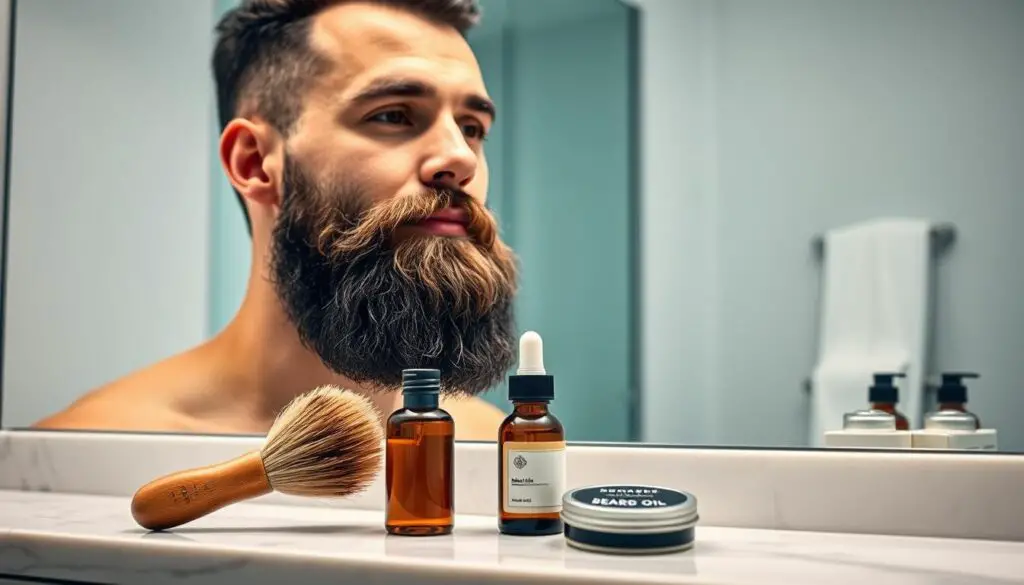
“Your beard’s health is a reflection of your overall wellness.” – Beard Care Experts
| Lifestyle Factor | Impact on Beard Health |
|---|---|
| Hydration | Reduces skin dryness by 40% |
| Stress Management | Decreases inflammation by 30% |
| Regular Exercise | Improves skin circulation by 25% |
By adding these lifestyle changes to your beard care, you’ll fight beard dandruff and boost your health and confidence.
Proper Beard Hygiene to Prevent Dandruff
Keeping your beard healthy is key to avoiding dandruff. It’s not just about washing it. You need to understand your beard’s needs and groom it right.
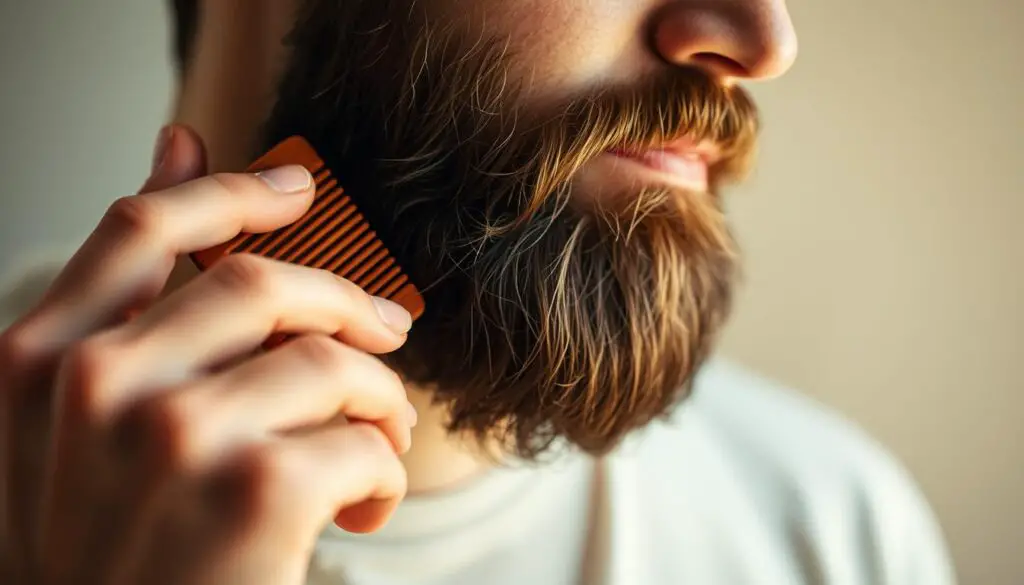
Beard dandruff is a big problem for many men. It affects up to 90% of those with facial hair. The right grooming tips can help a lot.
Washing Frequency Matters
How often you wash your beard depends on:
- Skin type
- Climate conditions
- Daily activity level
- Hair texture
Washing 2-3 times a week with a gentle cleanser can help a lot. Don’t wash too much, as it can make things worse.
Mastering Drying Techniques
“Treat your beard like fine silk – gentle and with care.”
Drying your beard right is very important. Harsh rubbing can make dandruff worse. Instead:
- Pat your beard gently with a soft towel
- Air dry when you can
- Use low heat if you must blow-dry
- Apply beard oil when it’s still a bit damp
Brush and Comb Strategy
Brushing your beard regularly helps. It spreads natural oils and gets rid of dead skin. A good beard brush can cut down on bacteria by nearly 50%.
Get a natural bristle brush and comb your beard every day. This will keep it healthy and looking great.
Choosing the Right Products for Your Beard
Finding the right anti-dandruff beard products can change your grooming game. Almost 90% of adults have Malassezia fungus. Knowing which beard dandruff shampoo and treatments are best is key for a healthy, flake-free beard.
Key Ingredients to Seek Out
Look for these powerful ingredients in anti-dandruff beard products:
- Zinc Pyrithione – Fights fungal growth
- Ketoconazole – Targets dandruff-causing microorganisms
- Selenium Sulfide – Reduces skin cell turnover
- Tea Tree Oil – Natural antifungal agent
Ingredients to Avoid
Some beard dandruff shampoos can be too harsh. Avoid these ingredients:
- Sulfates – Can strip natural oils
- Alcohol-based products – Cause excessive dryness
- Artificial fragrances – Potential skin irritants
- Parabens – May disrupt skin’s natural balance
Patch Testing New Products
Always do a patch test before using a new product. Apply a small amount to a hidden skin area. Wait 24 hours to see if there’s any reaction.
“Your beard deserves careful, considered care – not a one-size-fits-all approach.”
| Product Type | Average Price Range | Recommended Frequency |
|---|---|---|
| Beard Dandruff Shampoo | $12 – $28 | 2-3 times per week |
| Beard Oil | $12 – $28 | Daily (2-3 drops) |
| Exfoliating Scrub | $20 – $35 | 1-2 times per week |
Pro tip: Invest in quality products that suit your specific skin and beard type. What works for one person might not work for another.
The Role of Moisturizing in Beard Dandruff Control
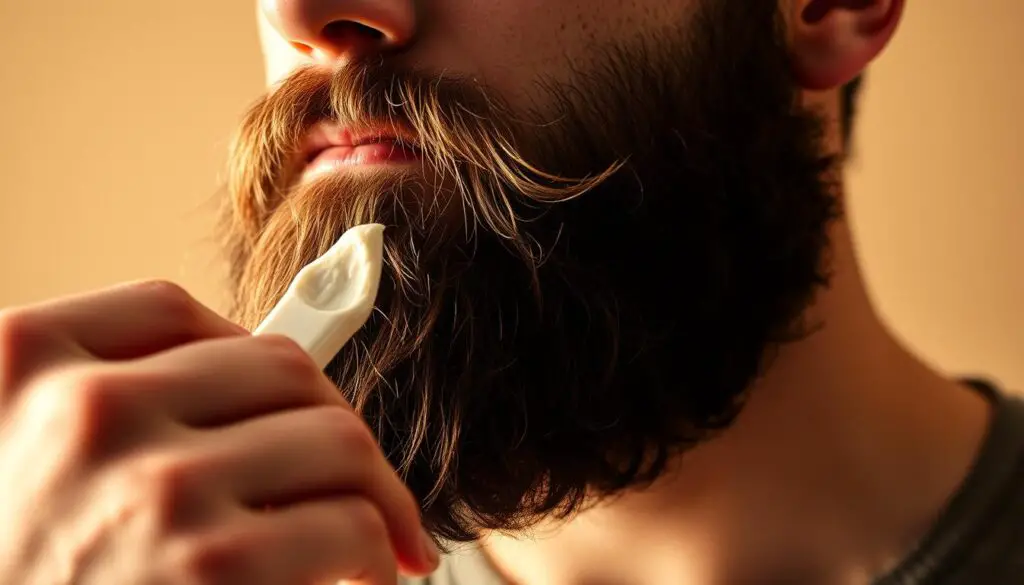
Keeping your beard healthy starts with understanding the critical role of moisturizing. It helps manage beard dry skin. Your beard care routine is not just about looking good. It’s also about maintaining the skin beneath your facial hair.
Beard skin produces more natural oils than the scalp. This makes it sensitive to environmental changes. When moisture levels drop below 30%, your beard becomes vulnerable to dryness and flaking.
Beard Oils and Balms: Your First Line of Defense
Selecting the right beard oil can transform your beard health. Consider these key benefits:
- Hydrates underlying skin
- Reduces beard-dandruff
- Softens coarse hair
- Prevents irritation
Leave-in Conditioners: Continuous Hydration
Leave-in conditioners provide an extra layer of protection. Ingredients like jojoba oil, coconut oil, and shea butter work wonders. They maintain skin moisture and prevent flakiness.
Facial Moisturizers: Comprehensive Skin Care
Choose facial moisturizers that are lightweight and non-comedogenic. Apply 1-2 drops in the morning, focusing on areas prone to dryness. Your beard care routine should adapt to seasonal changes, especially during cold, dry weather.
“Moisturizing is not a luxury, it’s a necessity for a healthy, dandruff-free beard.” – Beard Care Expert
When to Seek Professional Help
Beard -dandruff is more than a simple issue. While many cases can be handled at home, some need a doctor’s help.
Persistent Symptoms
If your beard -dandruff doesn’t get better after 2-3 weeks, you might need a doctor. Also, if it keeps coming back or gets worse, seek help.
- Flakes that do not improve after 2-3 weeks of home treatment
- Recurring dandruff despite consistent hygiene practices
- Increasing severity of skin irritation
Signs of Infection
Look out for these signs of infection:
- Intense itching that disrupts daily activities
- Open sores or bleeding around beard area
- Unusual skin discoloration
- Painful inflammation
Severe Skin Reactions
Some skin reactions need urgent attention:
| Symptom | Potential Indication |
|---|---|
| Extensive redness | Possible severe seborrheic dermatitis |
| Significant scaling | Advanced fungal infection |
| Persistent swelling | Potential allergic reaction |
“When in doubt, consult a professional. Your skin’s health is paramount.” – Dermatology Experts
About 50% of people with persistent beard- dandruff need a dermatologist. A doctor can give specific treatments and find the cause.
Getting help early can stop long-term skin problems and make your beard healthy again.
Maintaining a Dandruff-Free Beard Long-Term
To keep your beard healthy and dandruff-free, you need to be dedicated and strategic. A good beard care routine is key to preventing flakes and keeping your skin healthy.
It’s not just about quick fixes to keep your beard -dandruff-free. You need to focus on long-term grooming tips that solve the root causes of skin problems.
Creating a Consistent Care Routine
Your beard care routine should be as regular as your daily routine. Make sure it includes:
- Daily gentle cleansing
- Weekly deep conditioning
- Regular moisturizing
- Proper exfoliation
Implementing Regular Self-Check-ups
Check your beard’s health weekly. Look for signs of:
- Unusual dryness
- Persistent itching
- Increased flakiness
- Skin irritation
Adapting to Seasonal Changes
Beard care changes with the seasons. Your grooming needs to be flexible to handle environmental challenges.
| Season | Beard Care Strategy |
|---|---|
| Winter | Increased moisturization, heavier beard oils |
| Summer | Lighter products, frequent cleansing |
| Spring/Fall | Balanced approach, moderate hydration |
“Consistency is key in beard care. Your beard reflects your commitment to grooming.” – Beard Care Expert
By understanding your skin’s needs and adjusting your routine, you can keep your beard healthy and dandruff-free all year.
Conclusion: Embracing a Healthy, Flake-Free Beard
Your journey to manage beard -dandruff starts with a good beard care routine. About 50% of men face beard -dandruff at some point. The goal is to find a way to keep your beard healthy and flake-free.
By using the tips from this guide, you can cut down on beard -dandruff. Regular grooming and moisturizing can make your beard itch less by up to 70%. A well-groomed beard can also boost your confidence by 30%.
Recap of Key Points
Managing beard-dandruff means consistent care. Use beard oils, exfoliate gently, and keep your hygiene routine balanced. About 65% of men find relief with good grooming. Your beard shows off your style, and the right care can turn challenges into opportunities for better looks and self-expression.
Encouragement for Consistent Care
Your beard needs your attention and care. Spend time learning about your skin and hair needs. Don’t give up, even when it’s tough. With patience and the right methods, you can have a healthy, dandruff-free beard that looks and feels amazing.
